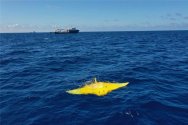Hendrik_2000
Lieutenant General
Well for you who is interested in the origin of Japanese I finally found the Korean Author his name is Wontak Hong He used to have website but it is gone now But he publish his finding make a fascinating reading of Ancient Korea, Japan, China. He draw much of his work from Samkuk Sagi which in return draw much from the History of Wei. But Akihito did acknowledge his Korean ancestry in 2001
In 2001, Emperor told reporters "I, on my part, feel a certain kinship with Korea, given the fact that it is recorded in the Chronicles of Japan that the mother of Emperor Kammu [Niigasa] was of the line of of ." It was the first time that a Japanese emperor publicly acknowledged Korean blood in the imperial line. According to the , Niigasa is a descendant of , son of Muryeong, who died in Japan in 513 ( Chapter 17).
In 2001, Emperor told reporters "I, on my part, feel a certain kinship with Korea, given the fact that it is recorded in the Chronicles of Japan that the mother of Emperor Kammu [Niigasa] was of the line of of ." It was the first time that a Japanese emperor publicly acknowledged Korean blood in the imperial line. According to the , Niigasa is a descendant of , son of Muryeong, who died in Japan in 513 ( Chapter 17).
Last edited:

